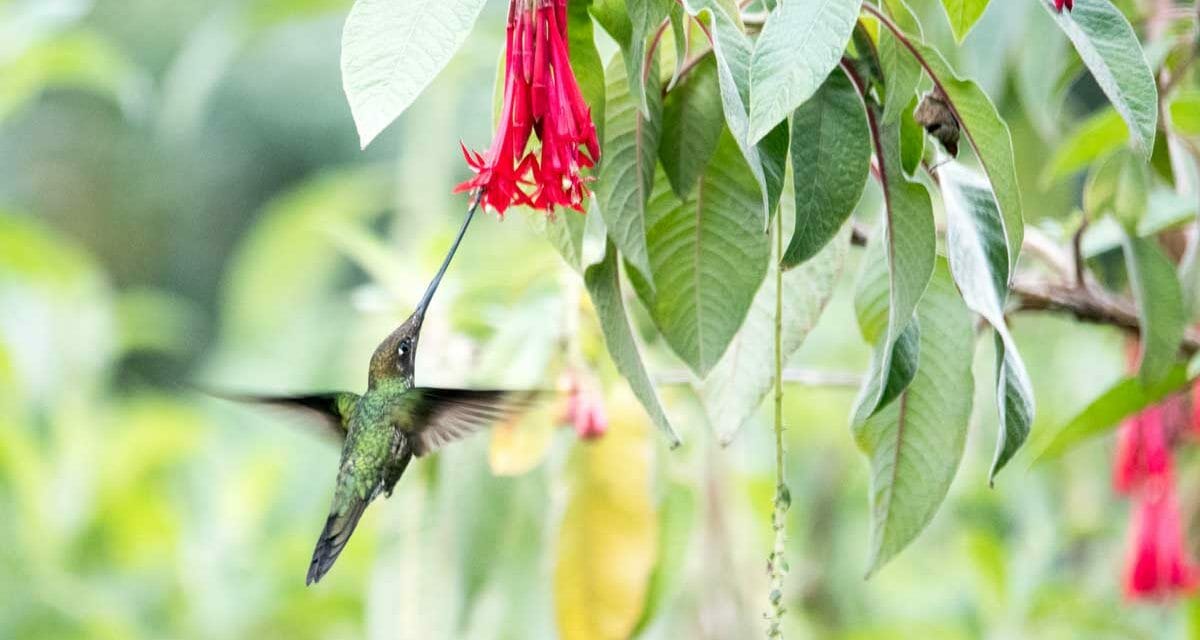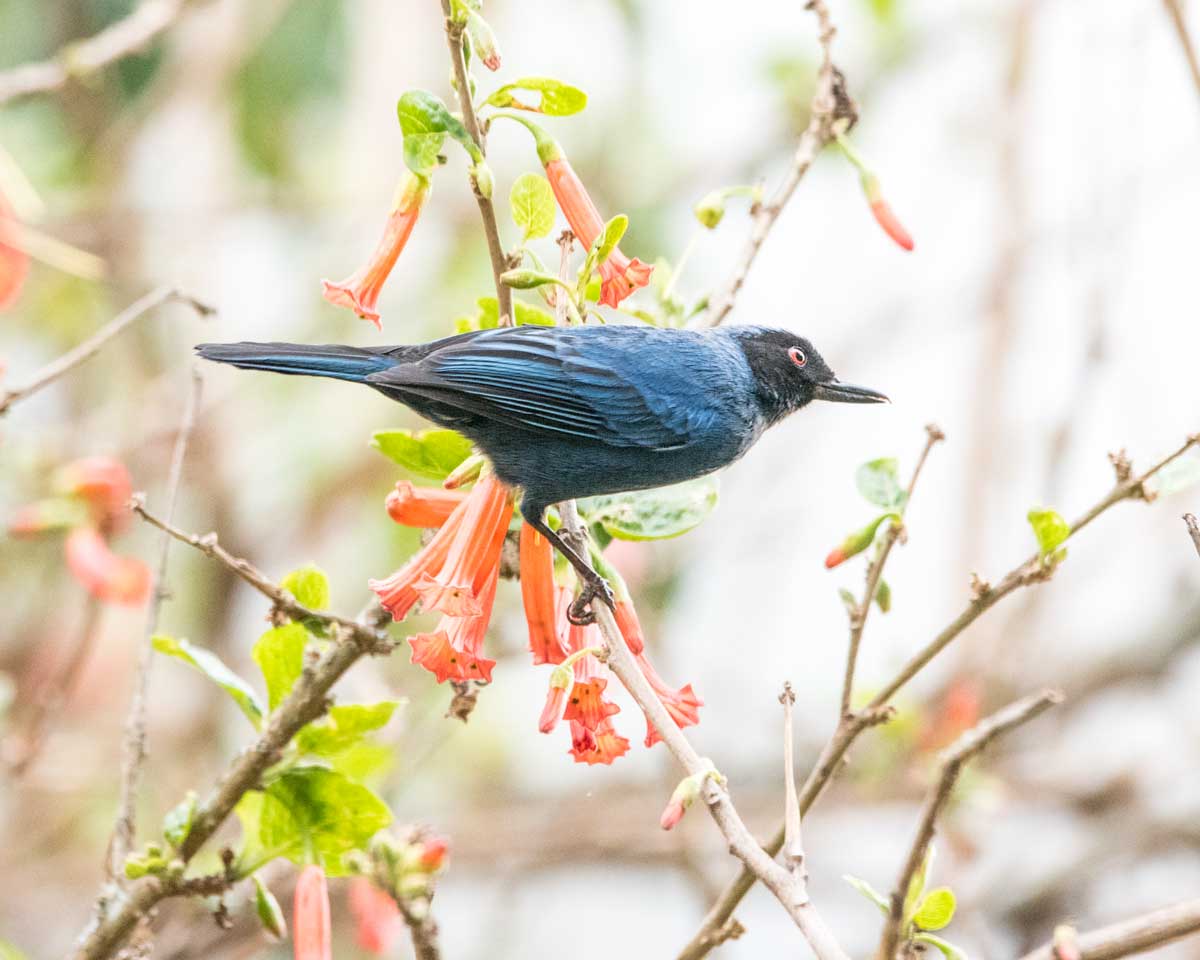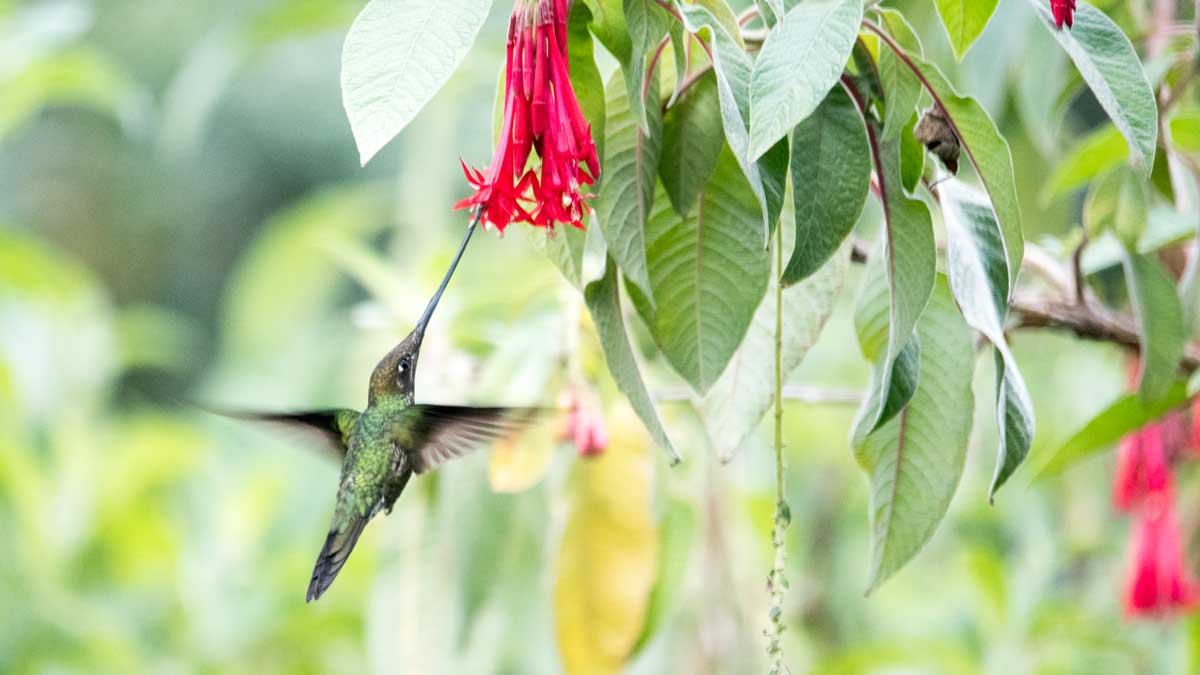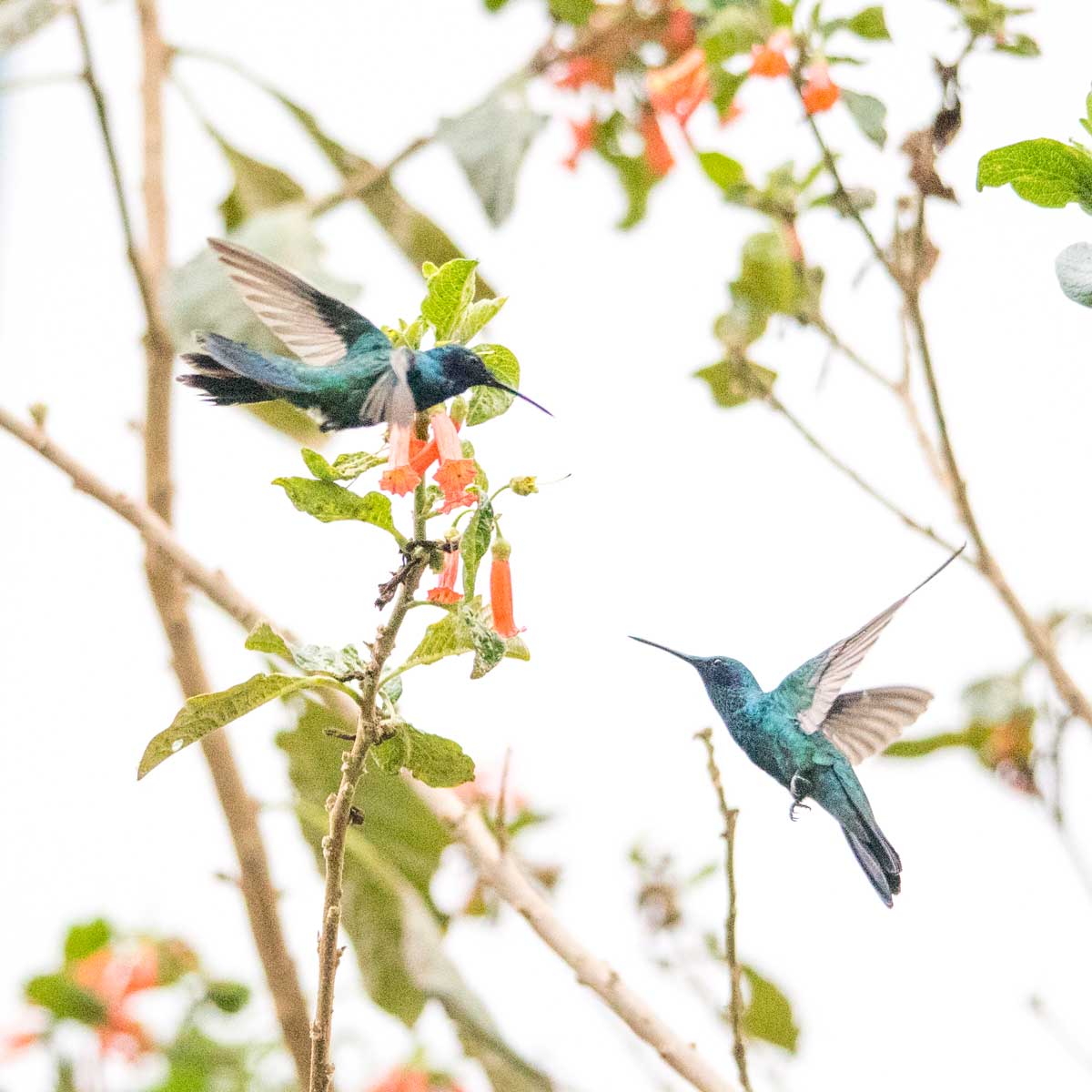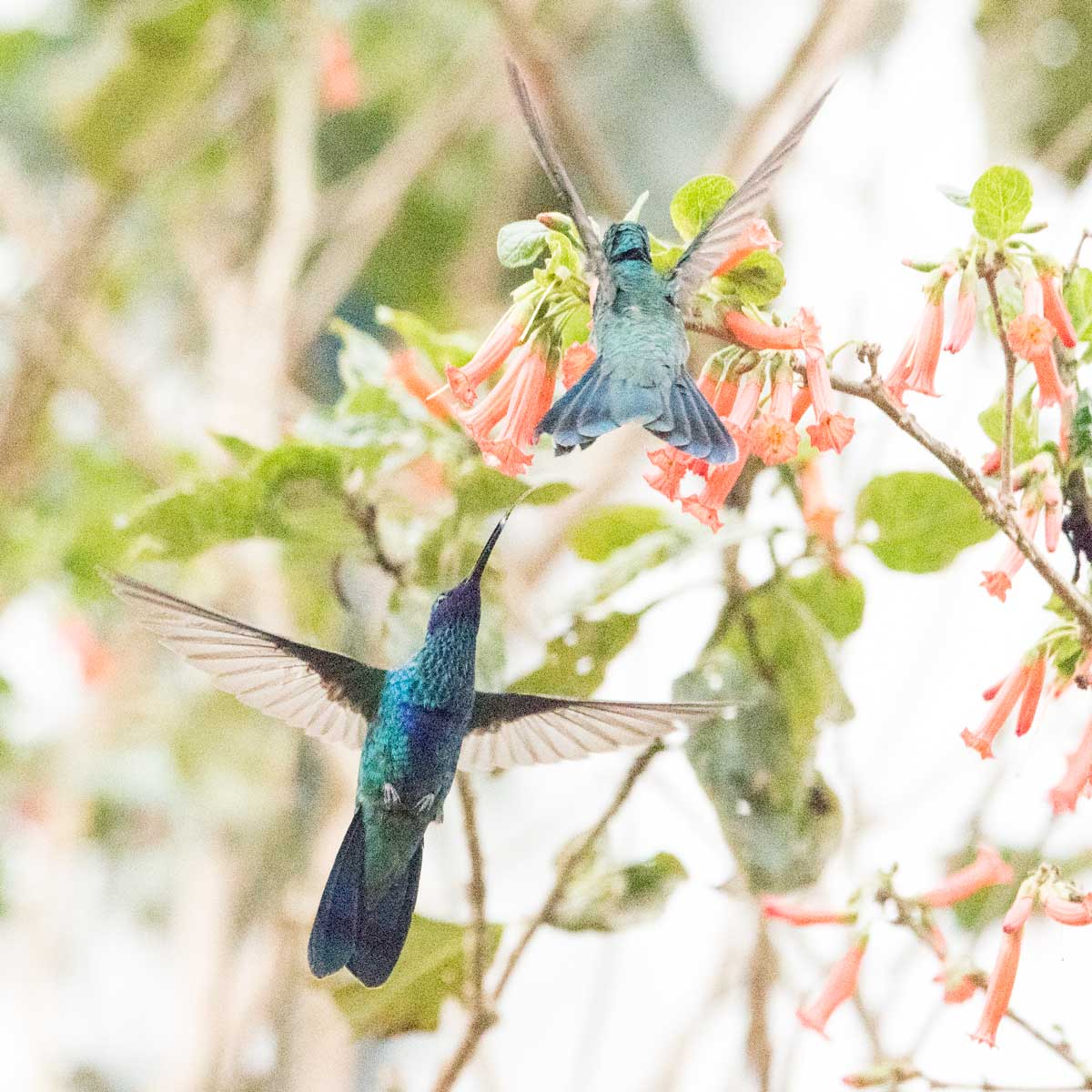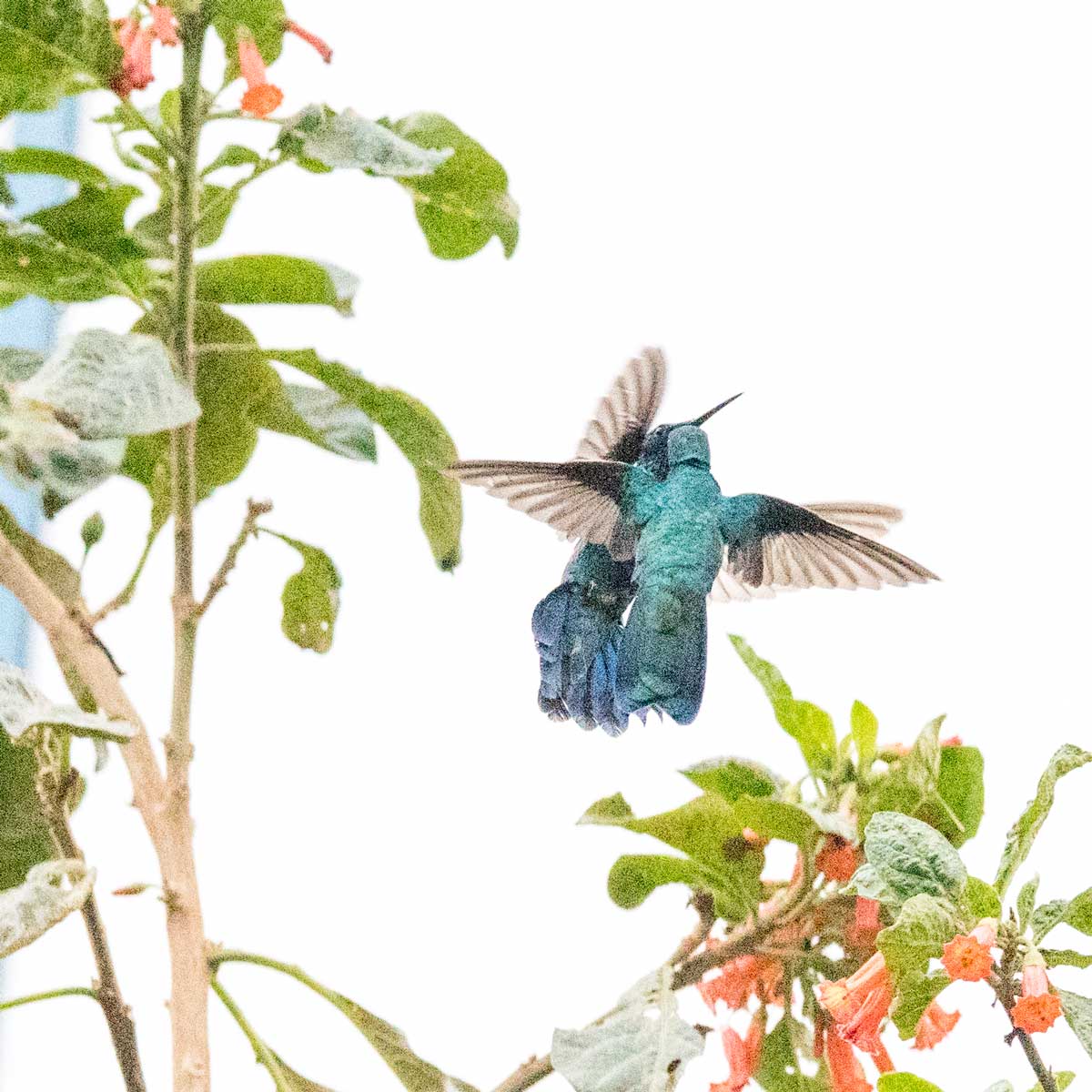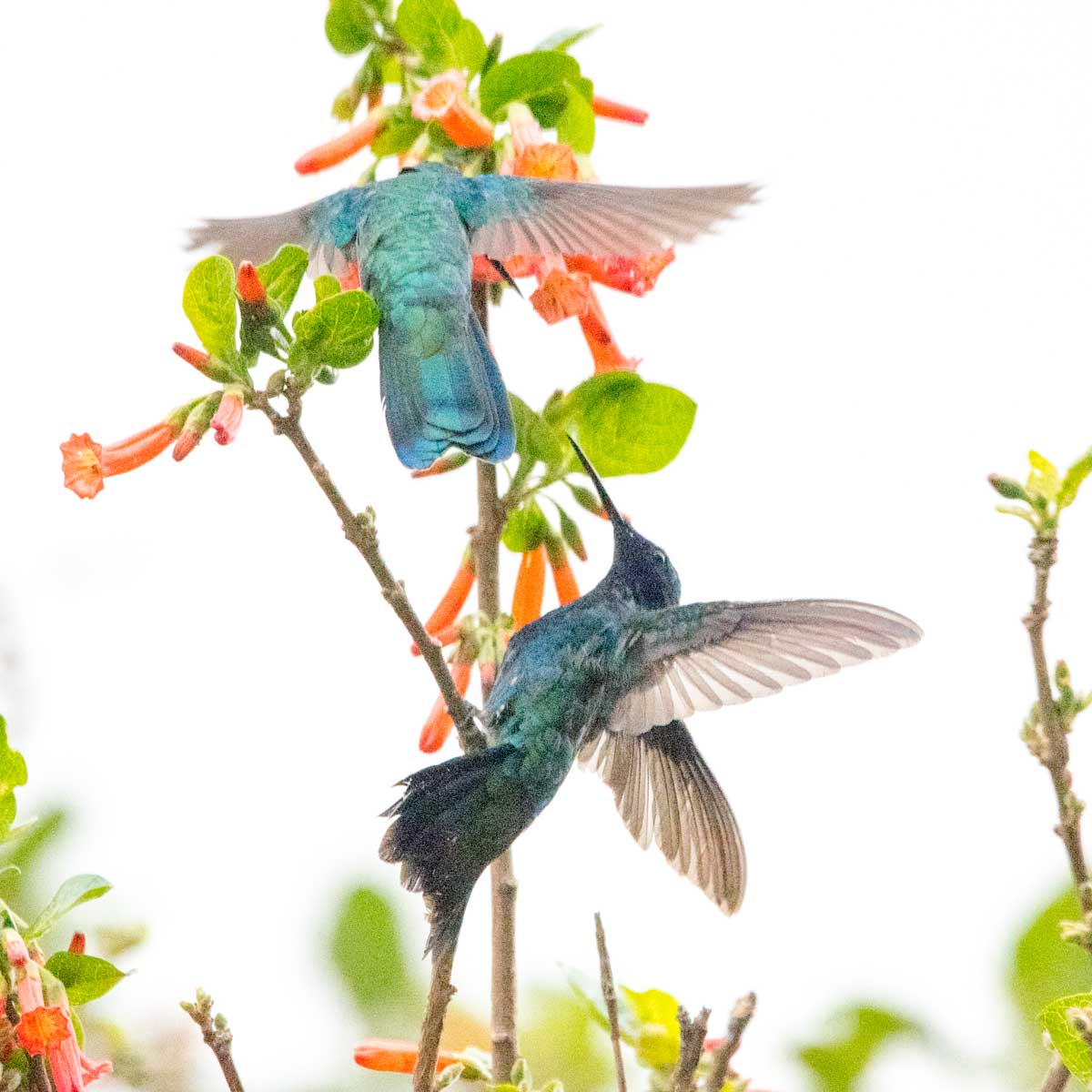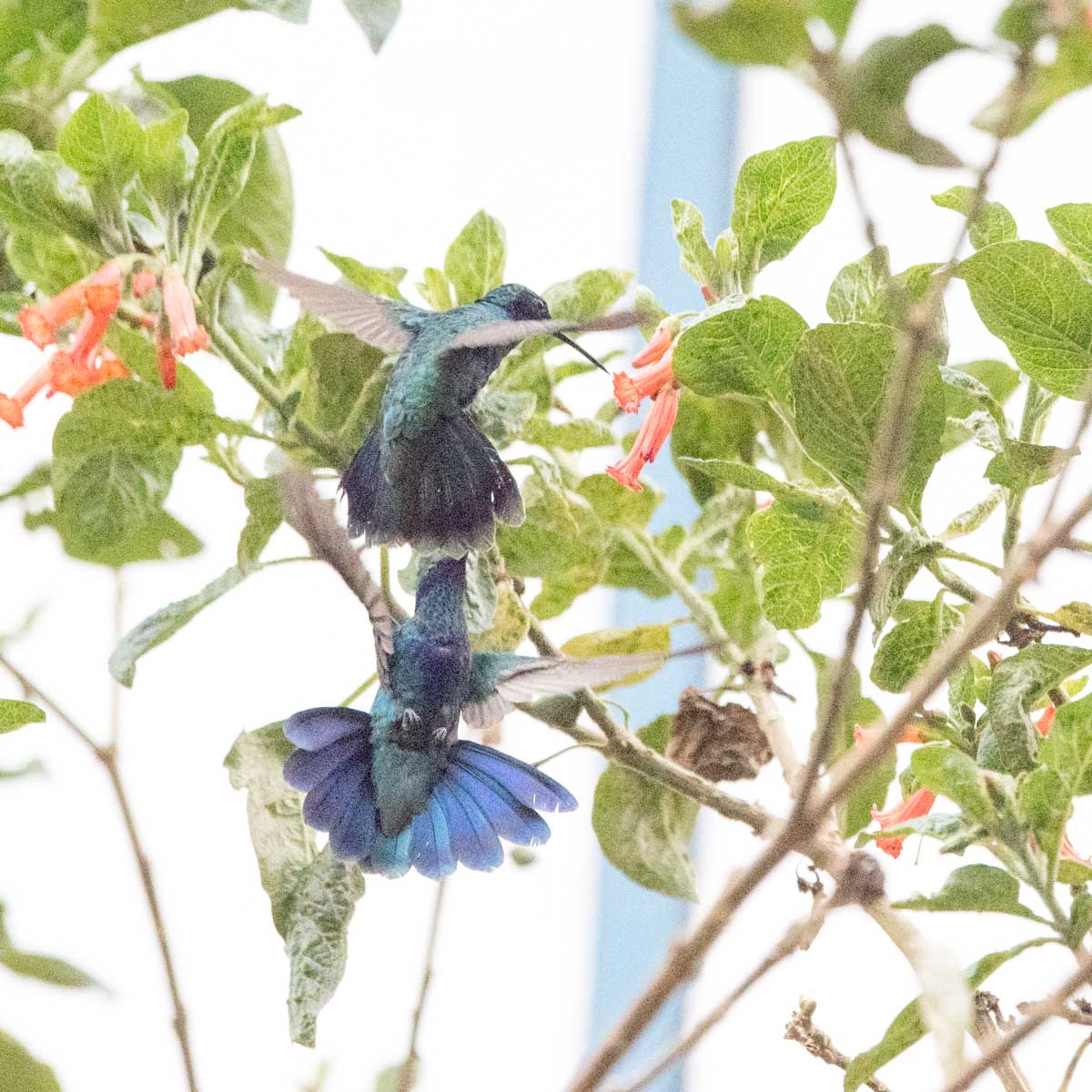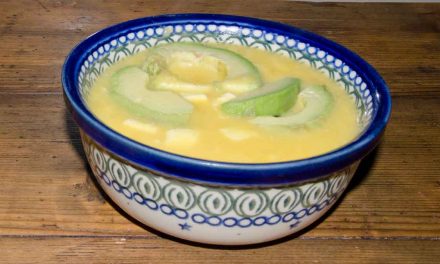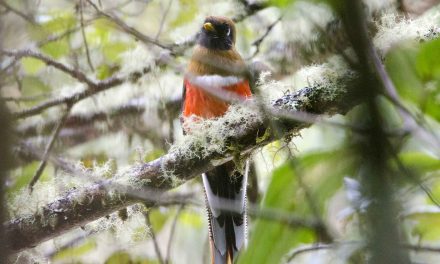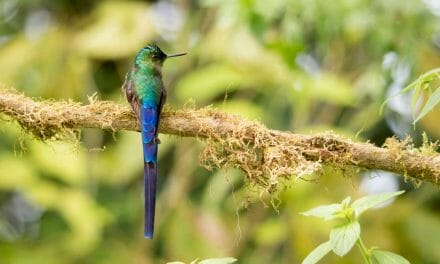As responsible travelers evolve, so do the stories we share.
This article is part of our living archive — trusted content we continue to care for.
First published on November 23, 2018 • Last updated on September 5, 2025.
Quito Botanical Garden Birdwatching
In recent years, birdwatching has taken off in Ecuador with many locals picking up binoculars and heading out into wildlife reserves and national parks. But sometimes it is just impossible to leave the city on the weekend. In order to satisfy that birdwatching itch, many have searched for local hotspots, including the Quito Botanical Garden.
While you might think that only the most common species can be spotted in an inner-city park, you will be presently surprised to hear that some iconic species, like the Sword-billed Hummingbird and the American Pygmy Kingfisher are on the list. Add migratory species, like the Summer Tanager and Rose-breasted Grosbeak, and the list rapidly expands. To see a complete list of possible birds to see, please check out noted birdwatcher Roger Ahlman’s photo album of the Quito Botanical Garden.
Our Afternoon at the Quito Botanical Garden
Recently, my husband and I decided to see how many birds we could find on a late afternoon. We walked from our apartment in the same neighborhood, keeping our camera equipment tucked away in bags. We recommend you do the same until after you have entered the Botanical Garden grounds. Theft of cameras and phones was once common in and around Parque Carolina and there is no need to advertise long lenses or expensive cameras any more than necessary.
We paid the entrance fee (currently $3.50 per person) and asked about closing time. We wanted to confirm that we could stay until a decent hour! We arrived at around 3 pm and were able to stay until closing at 5 pm. That made for a great two hours of birdwatching!
I was after a specific hummingbird I had seen when we lived here before, the Black Trainbearer. This is a small hummingbird in plain colors. However, the male of the species has an extremely long, split tail. When he whips his tail feathers in flight, they sound like repeated electric shocks. Previously, I had seen him near the cactus garden so we headed that way.
The cactus garden had a few flowering plants that I knew would be popular. It also borders the backside of one of the small ponds. The bushes that provide a barrier between the two were also heavy with flowers. So we sat down to wait. And we didn’t have to wait long.
The Sparkling Violetear
First, a Sparkling Violetear made an appearance. This stunning bird is very common in Quito but I never tire of seeing it. Its brilliant blue and green body shines like neon lights in the correct light. On either side of its bright head, it sports two lines of deep violet feathers that pop out when this hummingbird is excited or angry. This particular bird visited a tall, thin flowering cactus, slipping its long beak into the slender, red flowers.
The Sword-billed Hummingbird
Then I noticed a hummingbird in the elongated, fuchsia-like flowers of bushes bordering this part of the garden. As I approached, I was thrilled to see a Sword-billed Hummingbird sipping nectar from each flower in turn. This hummingbird has a beak that can be up to 10 centimeters long!
The Black Trainbearer
There was a short lull before I heard the crackling sound of a trainbearer tail. I knew my prime subject was close at hand. I searched and searched but it wasn’t until I looked skyward that I finally found his distinctive tail dancing in the tree high above my head. He was perched high on a branch making photos difficult at best. And though he gave me quite a show, with his tail twitching in the late afternoon light, my photos are only fair at best. I could only hope that he might make a second appearance.
Other Birds at the Botanical Garden
Even though I knew that it was possible to spot more species at the gardens, I was pleasantly surprised at how many birds we actually did get to see. Our entire list is on eBird if you care to take a look.
We watched a pair of Sparkling Violetears spar among the flowers of a tall tree outside the orchid exhibit. A tiny Woodstar buzzed like a bee around the very same flowers as these two paid attention only to each other. A Masked Flowerpiercer joined the crowd, making this the busiest intersection in the park.
Birds in The Japanese Garden
But perhaps the best birdwatching was all the way on the other side of the park in the brand new Japanese Garden. The carefully manicured space echoed with birdsong. Many of the species were high overhead, like a Golden Grosbeak that made a short appearance. There were at least a dozen Eared Doves and at least as many Great Thrushes, also known as Mirlos to Quiteños.
However, my highlight bird of the day was the female Black-tailed Trainbearer hummingbird. I almost missed her. I was watching the doves flit back and forth when my husband pointed behind me. And there she was, a stunning beauty with her long tail and stubby beak sipping from the slender, bright red flowering fuchsia.

